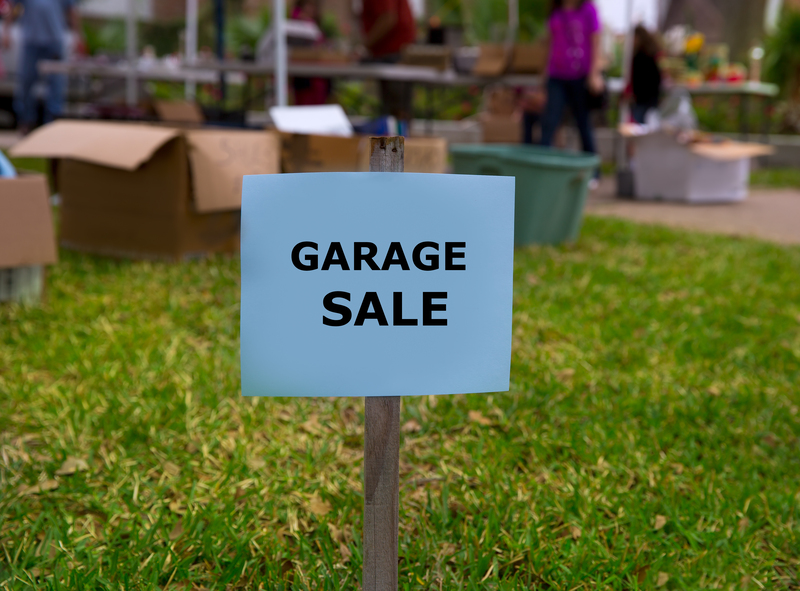Simplify, Organize, Thrive: Your Path to Decluttering and Minimalist Living
Do you find yourself overwhelmed by clutter, endless to-do lists, and mental chaos? Embracing minimalist living can help you create a serene, productive space and a more intentional lifestyle. In this comprehensive guide, we'll take you through practical steps to simplify, organize, and thrive, helping you embark on your journey to decluttering and minimalist living.
What is Decluttering and Minimalist Living?
Decluttering involves removing unnecessary or unused items from your spaces to create a more organized and efficient environment. Meanwhile, minimalist living takes decluttering a step further: it's a mindful lifestyle that focuses on intentionally owning and using only what truly adds value to your life. By simplifying your surroundings and routines, you can experience increased mental clarity, productivity, and joy.
Benefits of a Minimalist Lifestyle
- Reduces Stress: A tidy, uncluttered environment calms the mind and decreases anxiety.
- Saves Time: Less time spent cleaning or searching for things when every item has a purpose and place.
- Boosts Productivity: Distraction-free spaces contribute to better focus and efficiency.
- Saves Money: Avoiding unnecessary purchases keeps your finances in check.
- Creates Peace and Harmony: Minimalist spaces promote tranquility, helping you enjoy your home and life more.

The Psychology of Clutter
Why do we accumulate clutter? Often, emotional attachment, fear of waste, or the pursuit of happiness through material goods leads us to hold onto items we no longer need. Understanding these roots is essential for lasting success in decluttering and minimalist living.
- Sentimental Value: Items tied to memories can be hard to part with.
- Fear of Future Need: The "just in case" mindset keeps excess possessions in our homes.
- Societal Pressure: Modern life encourages accumulation. Minimalist living invites us to challenge these norms.
How to Start Decluttering and Simplifying Your Life
1. Set Clear Intentions
Begin your journey by clearly defining why you want to adopt a minimalist lifestyle. Write down your goals--whether it's less stress, more time for loved ones, or greater financial freedom. This intention will inspire you when the process gets tough.
2. Create a Decluttering Plan
Start small and be realistic. Focus on one area at a time:
- Make a list of spaces to tackle, such as the closet, kitchen, or garage.
- Dedicate specific time slots for each area--consistency creates momentum.
- Gather supplies: boxes for donations, trash bags, and cleaning tools.
3. The Four-Box Method
One of the most effective decluttering strategies is using four boxes labeled:
- Keep
- Donate
- Sell
- Trash
Every item must go into one box. This forces choices and streamlines the process. Don't second-guess; trust your initial decision.
4. Keep Only What You Use and Love
Ask yourself:
- Do I use this item regularly?
- Does it bring me joy?
- Could someone else benefit from it?
If you haven't used or worn something in the past year, it's time to let it go.
Practical Steps for Organizing and Minimalist Living
Declutter Room by Room
- Entryway: Simplify by removing old shoes and coats. Keep only everyday essentials.
- Kitchen: Donate duplicate utensils, expired pantry items, or seldom-used gadgets.
- Living Room: Clear surfaces, limit decorative items, and organize entertainment centers.
- Bedroom: Pare down clothes, keep nightstands clear, and store away seasonal linens.
- Bathroom: Toss expired products, limit toiletries, and use drawer organizers.
Smart Storage Solutions
- Baskets and Bins: Contain loose items for a tidy appearance.
- Vertical Storage: Utilize shelves and wall hooks.
- Drawer Organizers: Compartmentalize makeup, utensils, and stationery.
- Underbed Storage: Store out-of-season clothing or spare linens.
Develop Minimalist Habits
- Adopt a "one in, one out" rule--for every new item, let go of an old one.
- Do regular mini-declutters: Spend 5-10 minutes each day tidying a small space.
- Be intentional with purchases: Ask if you truly need an item before buying.
- Embrace digital minimalism: Organize files, unsubscribe from unused services, and declutter your inbox.
Minimalism Beyond the Home
Minimalist Schedules and Routines
Decluttering isn't just physical--it's mental and digital, too. Streamline your calendar and commitments:
- Prioritize tasks and cut out non-essential obligations.
- Batch similar tasks to increase efficiency and free up time.
- Schedule white space in your day for relaxation and creativity.
Minimalist Living for Families
Minimalist living works for all ages. Encourage family members to participate in decluttering and organization decisions. Teach children the value of experiences over possessions. Create shared meaningful spaces rather than filling your home with things.
Minimalist Travel and Technology
- Pack only what you need for trips--think mix-and-match outfits and multi-use gadgets.
- Limit digital clutter by managing photo libraries and apps.
- Set boundaries for screen time to foster mindfulness and connection during travel and at home.
Common Challenges in Decluttering and Minimalism - and Solutions
- Emotional Roadblocks: If letting go feels hard, take photos before donating, or keep one memorabilia box for sentimental items.
- Time Constraints: Use the 10-minute tidy rule to maintain progress without overwhelm.
- Family Resistance: Lead by example, communicate the benefits, and allow each person to declutter at their own pace.
- Fear of Waste: Find peace in donating or recycling items so they serve someone else.
Transformative Stories: Real-Life Minimalism Success
Thousands have embraced organized minimalist living with impressive results:
- Maria's Story: After decluttering, she experienced less anxiety and enjoyed more quality time with her family, even discovering a new passion for gardening with her freed-up space and mind.
- Daniel's Success: Shedding unnecessary belongings enabled him to save for travel and focus on his creative pursuits.
- The Tran family: Through collaborative decluttering, they transformed chaotic routines into intentional family rituals and cozy, inviting living spaces.
Maintaining Minimalist Living for the Long-Term
Regularly Reevaluate
Minimalism is an ongoing process. Schedule periodic check-ins--monthly or quarterly--to reassess your belongings and lifestyle. This keeps clutter at bay and allows your needs and tastes to evolve.
Practice Gratitude
Appreciate the items you choose to keep. Gratitude shifts focus from what you're letting go to what you're intentionally keeping, reinforcing your minimalist mindset.
Celebrate Experiences Over Things
Invest your resources in experiences--family outings, hobbies, self-care--rather than material possessions. Meaningful experiences foster lasting happiness and support minimalist living.
The Environmental Impact of Minimalism
Adopting decluttered and minimalist living not only benefits your personal life but also the planet:
- Reduces Waste: Less consumerism means less landfill waste.
- Lowers Carbon Footprint: Living with less lessens your environmental impact.
- Encourages Sustainable Choices: Buying wisely and using what you have supports a thoughtful, earth-friendly lifestyle.
Tools and Resources for Minimalist Organization
- Donation Centers: Goodwill, Habitat for Humanity, local shelters
- Resale Apps: OfferUp, eBay, Facebook Marketplace
- Organization Apps: Trello, Todoist, Google Keep for task and digital file management
- Inspiration: Minimalism podcasts, documentaries ("Minimalism: A Documentary About the Important Things"), and books ("The Life-Changing Magic of Tidying Up" by Marie Kondo; "Goodbye, Things" by Fumio Sasaki)

Frequently Asked Questions: Minimalist Living Simplified
Is minimalist living for everyone?
Minimalism is highly personalized--there is no one-size-fits-all. Try adopting decluttering principles and choose what works for your needs and lifestyle.
Do I have to get rid of everything?
No--minimalist living is about intentionality, not deprivation. Keep what you love and use, let go of the rest.
How can I motivate myself to start?
Set small, achievable goals. Celebrate progress. Find an accountability partner or join online minimalist communities for support.
Will I regret letting things go?
It's natural to feel uncertainty, but most people find relief and freedom after decluttering. Remember, the focus is on making room for what truly matters.
Conclusion: Simplify, Organize, and Thrive Today
Simplifying, organizing, and embracing minimalist living transforms not only your space but your entire mindset. Minimalism is an ongoing journey, fostering clarity and intention amid modern chaos. Start small, celebrate progress, and enjoy how less truly becomes more. Your path to decluttering and minimalist living is rich with rewards: more time, less stress, and a life filled with purpose and peace.
Ready to embrace the minimalist mindset and thrive? Start today--your calm, organized, and meaningful life awaits!